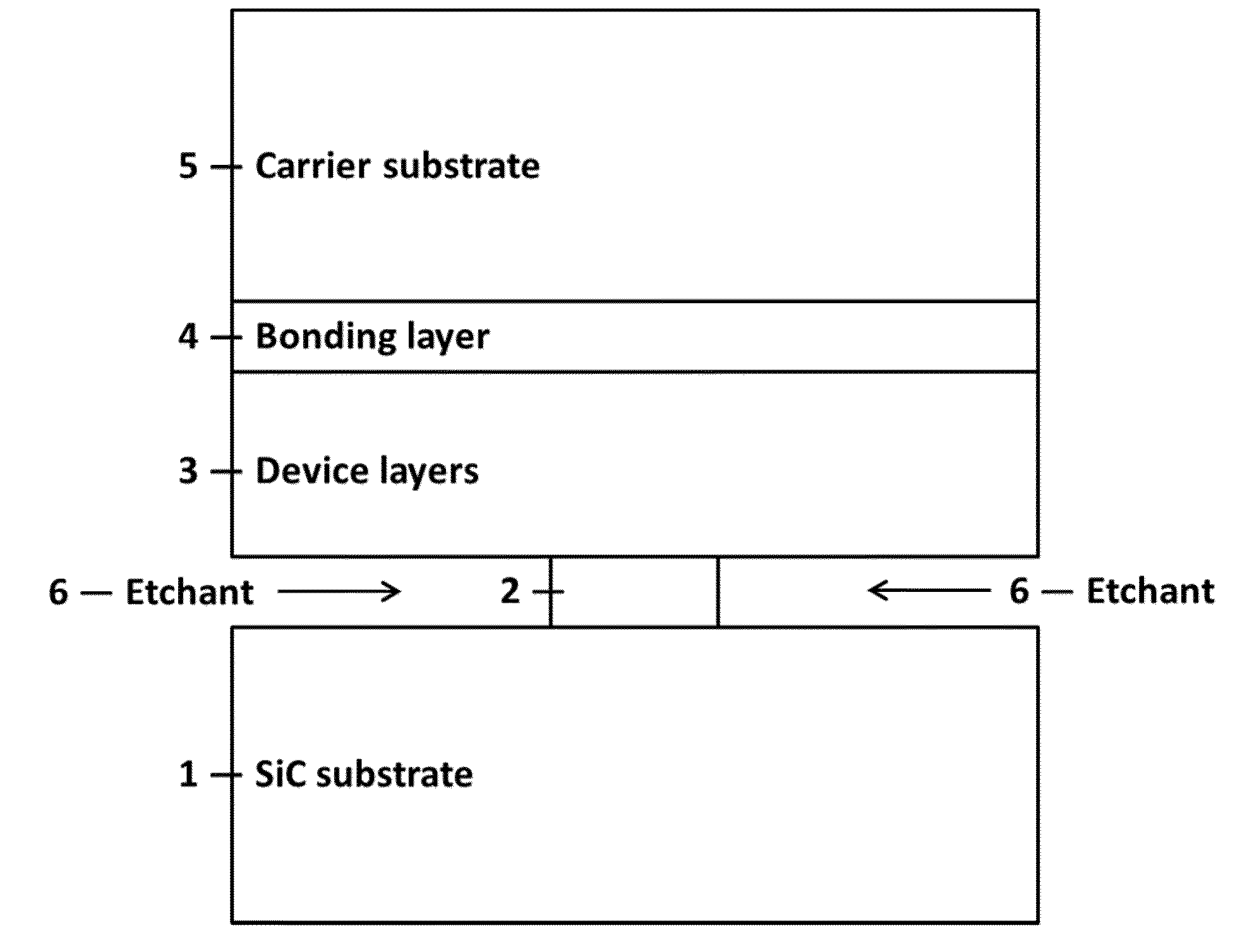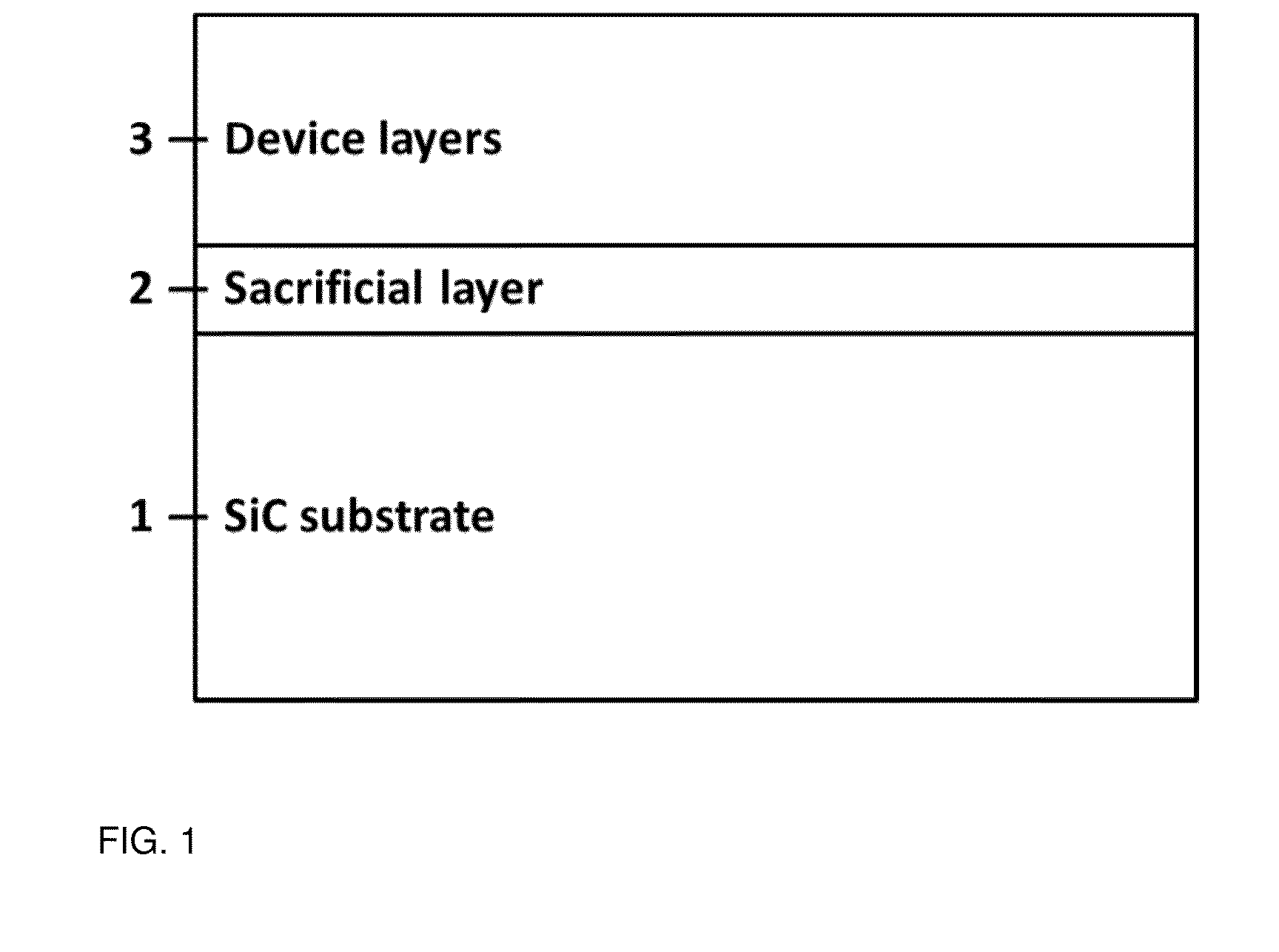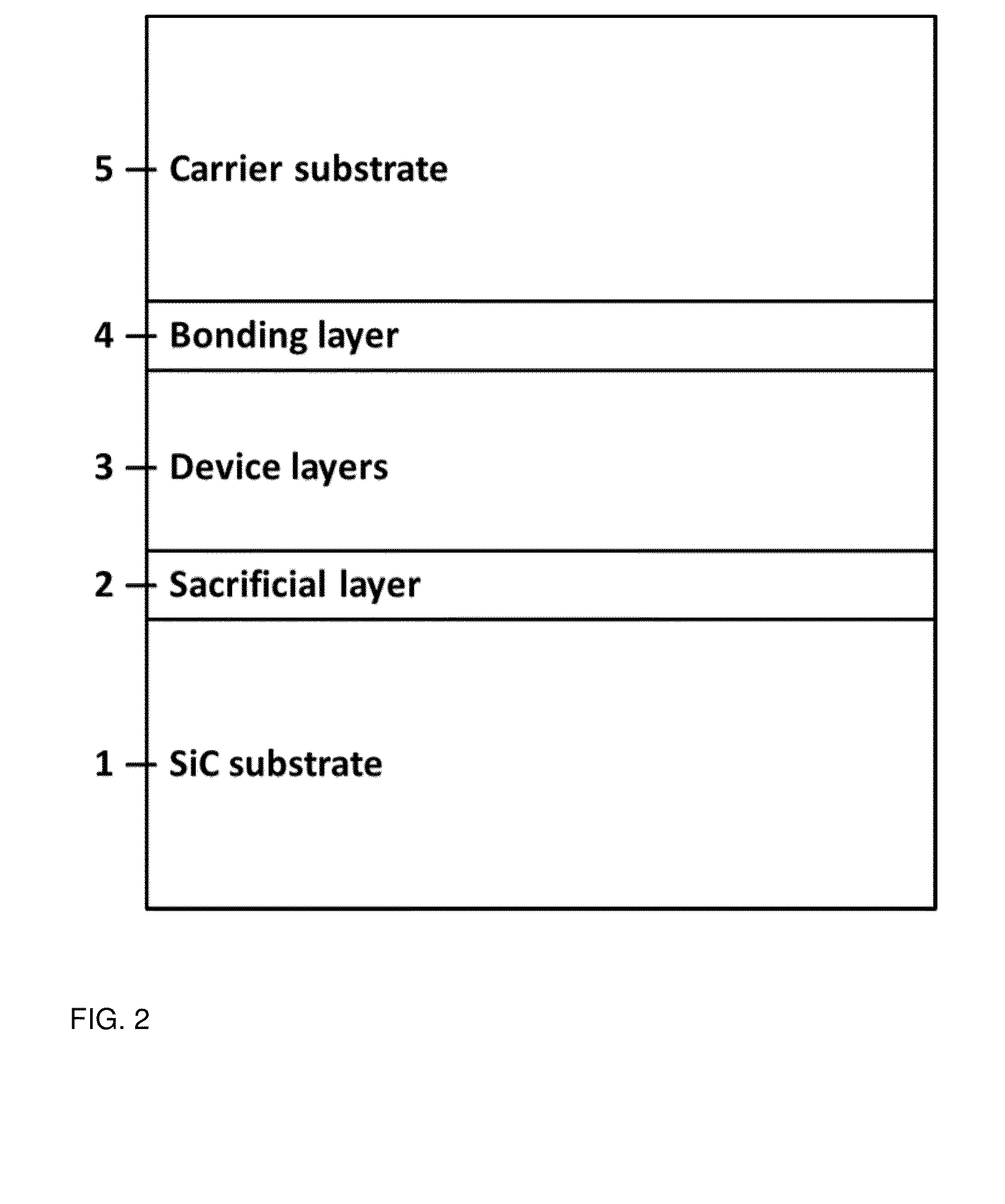Lift-off of epitaxial layers from silicon carbide or compound semiconductor substrates
a technology of compound semiconductor substrates and silicon carbide, which is applied in the direction of semiconductor devices, electrical equipment, basic electric elements, etc., can solve the problems of limiting the number of times a substrate can be recycled, and achieve the effects of low thermal budget, large thermal budget, and greater processing flexibility
- Summary
- Abstract
- Description
- Claims
- Application Information
AI Technical Summary
Benefits of technology
Problems solved by technology
Method used
Image
Examples
Embodiment Construction
[0027]The present invention provides a process to remove epitaxially grown metal, semiconductor and / or insulator layers from a SiC substrate using an intermediate, sacrificial epitaxial layer. A preferred embodiment of this invention involves growing an epitaxial sacrificial layer 2 on the SiC substrate 1 prior to growing the remainder of the epitaxial device layers 3 as shown in FIG. 1. The SiC substrate should have a hexagonal crystal structure, consisting of either the 4H or 6H polytype. The sacrificial layer 2 should have a similar crystal structure and in-plane lattice constant, a, to SiC allowing for epitaxial growth of the sacrificial layer 2 on the SiC substrate 1. The sacrificial layer 2 should also be easily removed by selective etching compared to the SiC substrate 1 and any device layers 3 grown on top. The sacrificial layer 2 that has been experimentally demonstrated in our lab was tantalum nitride (Ta2N), but could also be other transition metal nitrides (TMN) such as ...
PUM
 Login to View More
Login to View More Abstract
Description
Claims
Application Information
 Login to View More
Login to View More - R&D
- Intellectual Property
- Life Sciences
- Materials
- Tech Scout
- Unparalleled Data Quality
- Higher Quality Content
- 60% Fewer Hallucinations
Browse by: Latest US Patents, China's latest patents, Technical Efficacy Thesaurus, Application Domain, Technology Topic, Popular Technical Reports.
© 2025 PatSnap. All rights reserved.Legal|Privacy policy|Modern Slavery Act Transparency Statement|Sitemap|About US| Contact US: help@patsnap.com



